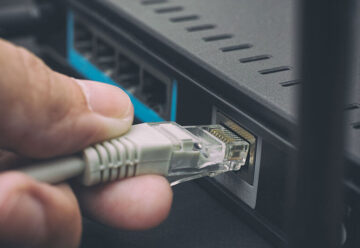Here we review the difference between Ethernet vs Dark Fibre. Dark Fibre is as it sounds and refers to fibre that is unlit and unmanaged but owned or leased wholly by the business purchasing it whereas, Ethernet for business is where the bandwidth required is leased from a connectivity provider who manages the network.
What is business ethernet?
For most, business Ethernet (also known as Carrier Ethernet or Ethernet Fibre) is probably the best choice for day-to-day networking, especially for companies who work across multiple sites and those with requirements for multiple users to access the network easily and at one time. With an increase in the number of remote workers in businesses and the advent of Cloud applications, there are increasingly more people trying to access networks from a greater range of locations – home, satellite offices as well as main sites.
How would a business connect to ethernet?
There are a variety of connectivity options, Ethernet Point-to-Point (P2P), Ethernet Point-to-Multipoint (P2MP) and Ethernet VPLS depending on the complexity of the network needed. Ethernet is also available over a range of bandwidths – from 10Mbps to 10Gbps – enabling businesses to scale up or down and pay only for capacity they need. With minimal costs associated, Ethernet is also one of the most cost-effective services available.
Dark Fibre, on the other hand, provides limitless capacity at low cost (versus a managed network) and works well where network protocol isn’t required, but high capacity is. Where distances are short and only P2P connectivity is needed is often where Dark Fibre could be most effective.
Which is more secure – Dark Fibre or Ethernet?
A Dark Fibre network is considered more secure than Ethernet as it is a direct connection from point A to point B and is dedicated rather than traversing multiple networks, and it is privately operated meaning control lies with the business and not a network provider. Therefore, Dark Fibre is more suited to businesses that deal with sensitive data, such as financial services and healthcare. It’s worth being aware however that the end-user will be responsible for the maintenance of the network and will need to be prepared for potential failures.
What is Ethernet over Fibre?
Ethernet Over Fibre (EOF) is a connection dedicated to your business, using a fibre Optic line instead of the traditional copper of previous years. It’s all about speed: for a leased-line connection, you can get speeds from 10Mbps up to 10Gbps.
These connections are bespoke, allowing you to choose the speed you get and pay for. Of course, as your demand grows, you can increase the speed without changing the underlying technology.
Another advantage of EOF is because it’s a dedicated connection, you’ll never have issues caused by other local users. VLAN tagging is also easier with EOF, meaning that you can divide the line between different departments or sites on your premises.







